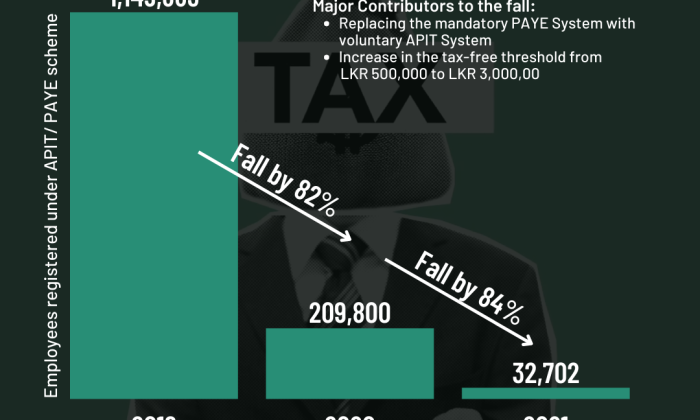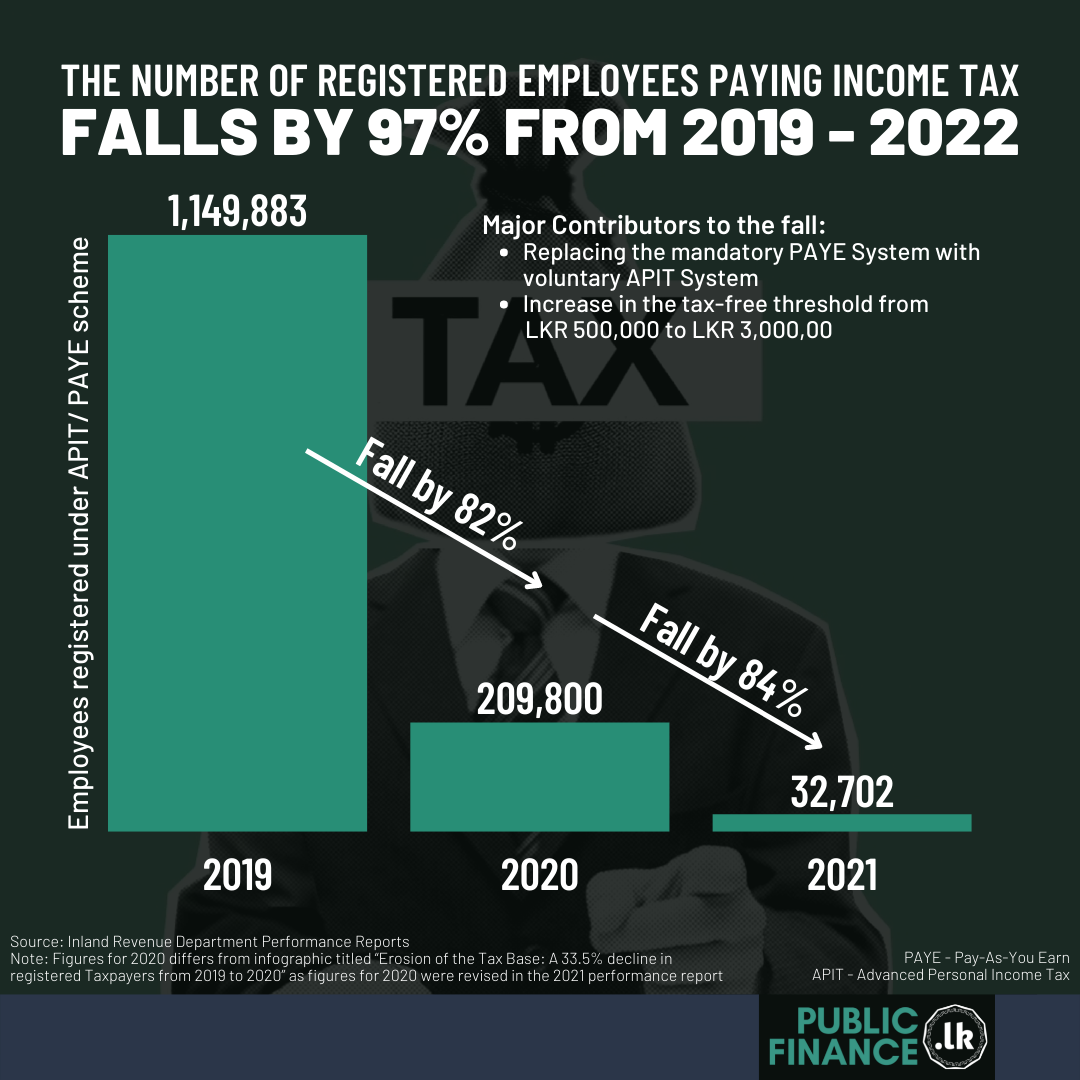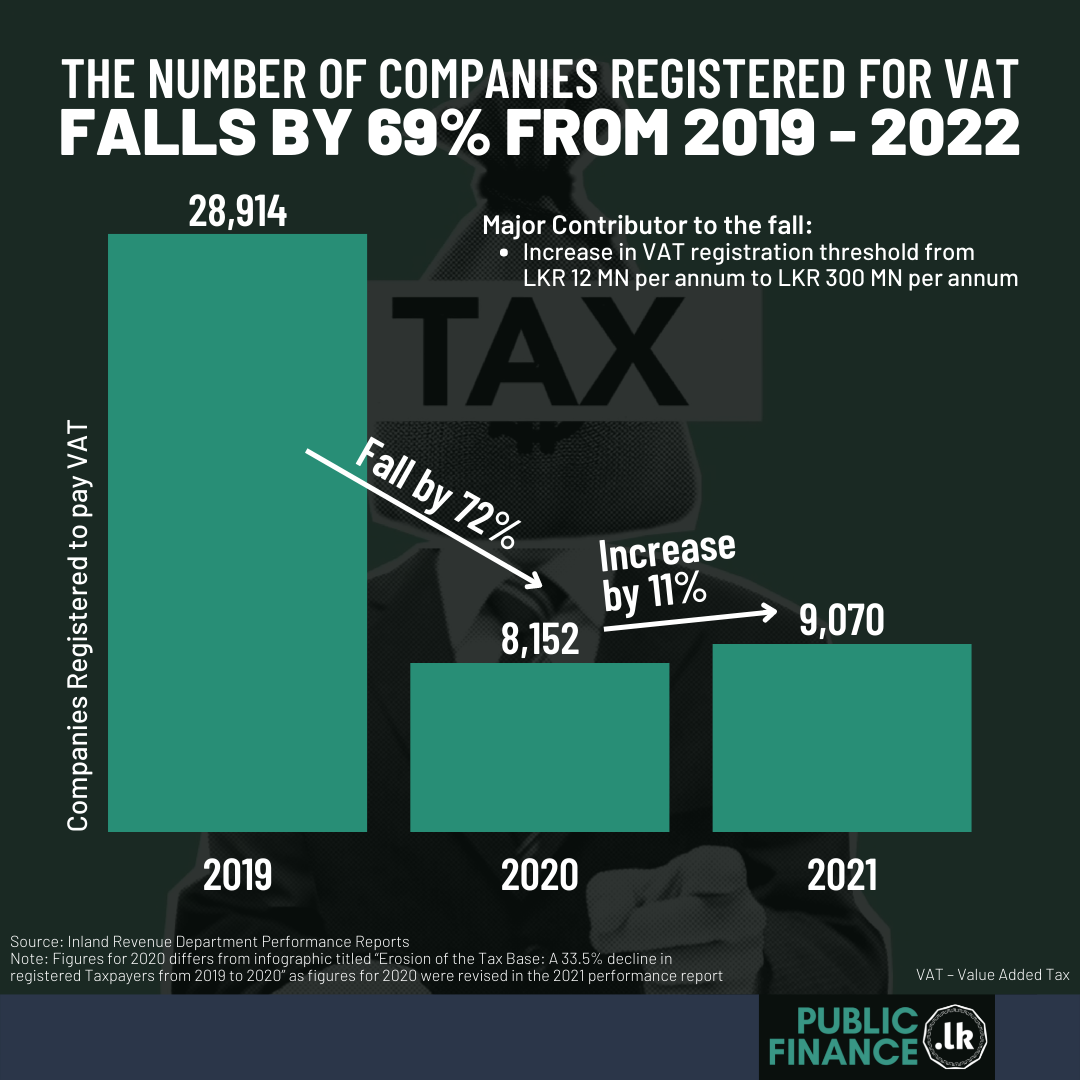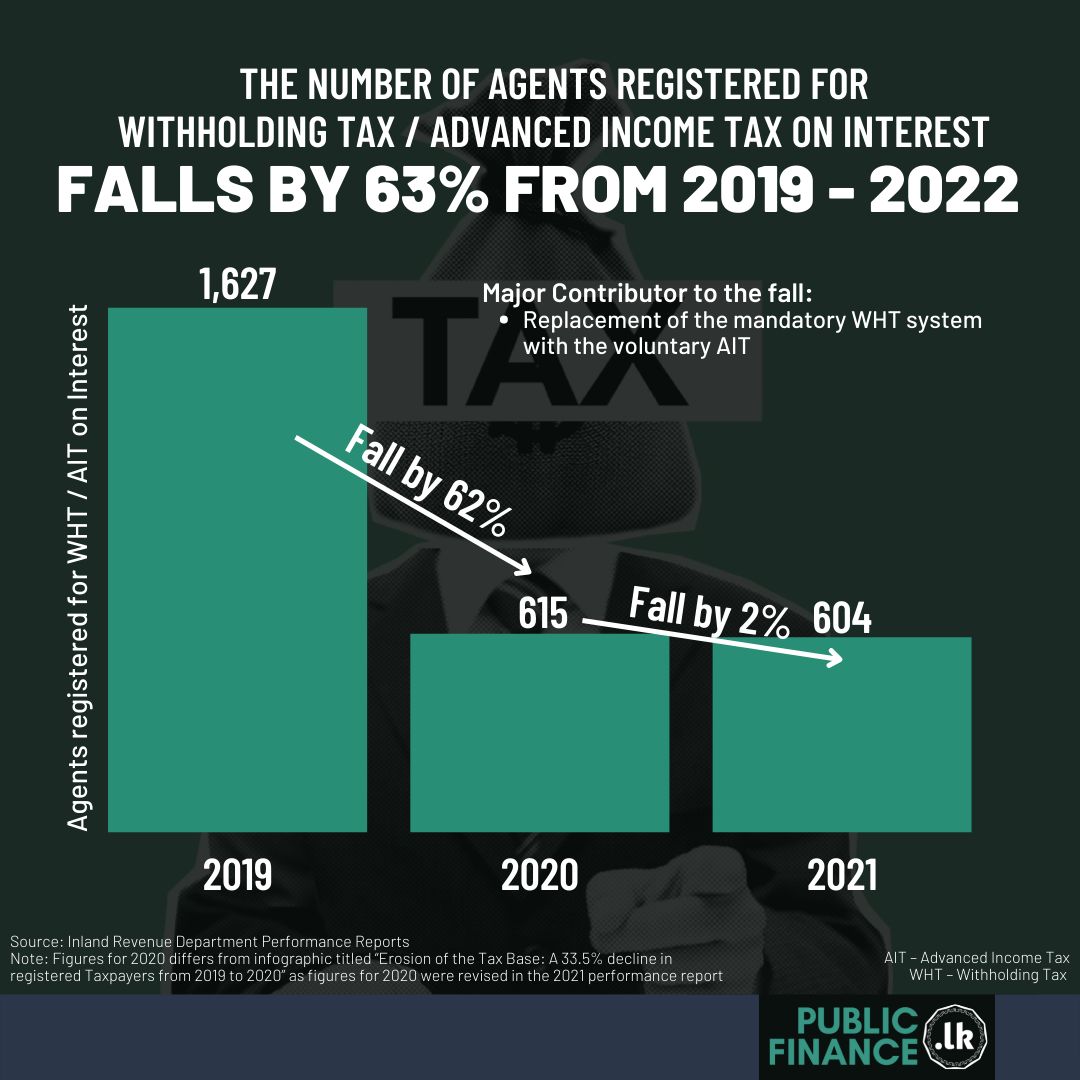





Sri Lanka experienced a significant change in its tax system for the year 2020. These changes have led to a considerable shrinking in Sri Lanka’s tax base across various taxes. A narrow tax base increases tax administration costs and reduces revenue collection. The infographics below depict the impact of some of these changes on Sri Lanka’s tax base.
The number of employees registered to pay monthly tax on their incomes reduced by 97% from 2019 to 2022, this was mainly due to the replacement of the mandatory Pay-As-You-Earn (PAYE) tax system with an optional Advanced Personal Income Tax (APIT) system and the increase in the tax-free threshold by 6 times. There was also a change in the system to pay taxes on interest income. It was initially done via withholding tax, which was replaced with Advanced Income Tax for 2020, this led to a reduction in agents registered to pay taxes on interest income by 63% for the same time period. Lastly by increasing the VAT registration threshold from LKR 12 MN per annum to LKR 300 MN per annum, the number of companies registered for VAT fell by 69% from 2019 to 2022.
According to Verite Research publication “Restoring Efficient Tax Collection Methods: Withholding Tax and Pay-As-You-Earn”, by reinstating the mandatory Pay-As-You-Earn (PAYE) tax and the Withholding Tax at 10% as a prepayment on interest, fees and other incomes, would help Sri Lanka regain its lost tax base and gain an additional revenue of LKR 184 billion in 2023.